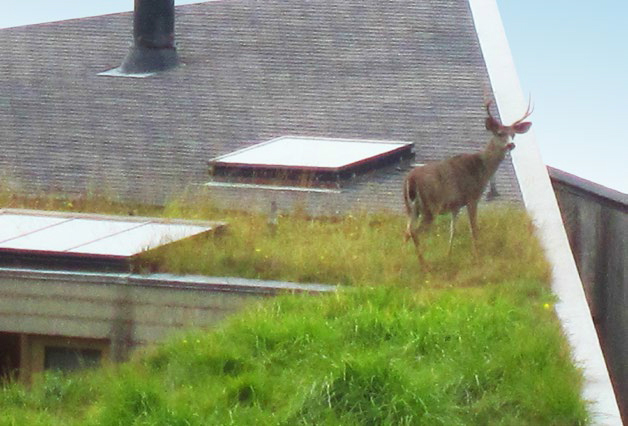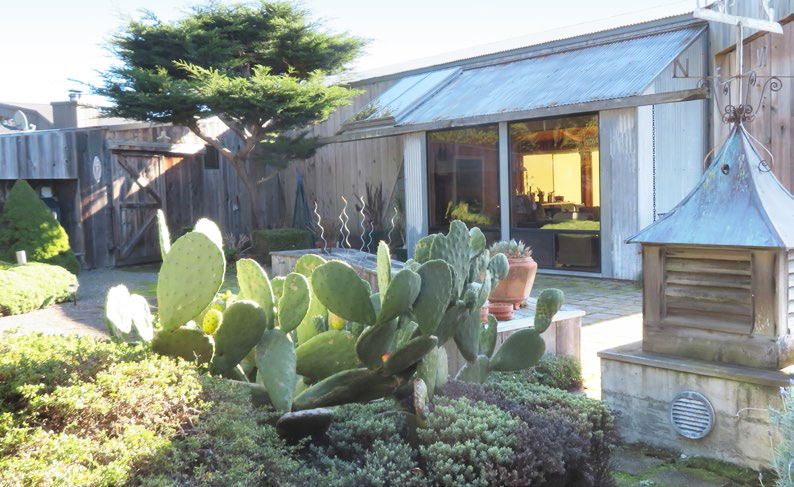Learning from the Land - Page 3
 |
 |
|
|
 |
|
|
 |
|
|
Bowman is intense in his regard for the larger picture. That's why he hesitates when asked how many homes he created at Sea Ranch, a mostly vacation home development designed to be in harmony with the land.
"I don't know," Bowman says. "Because it actually bothers me to do a building, and to do that to the landscape."
"I've really committed myself to the architecture, to being a serious architect. And I'm good at what I'm doing," he says. "But it bothered me my entire life that I am contributing to the displacement of the natural landscape, with concrete and asphalt."
The population explosion is his big worry. "The best part of so called 'green architecture' for me," he writes on his blog, "is that perhaps it will raise general awareness that Mother Earth is beginning to squirm a bit—perhaps quite a bit!"
At Sea Ranch Bowman has designed about 30 houses. Few if any architects have designed more houses there than Bowman. And the number of jobs he's done there is even higher, because he often returns to prior projects to remodel.
In total Bowman has designed about 40 homes and a handful of other projects, he says, including the ziggurat-shaped Spring Lake Park Visitors Center in Santa Rosa.
Bowman is proud that his homes differ in look, as each derives from its site. Scheidt recalls Bowman turning down one job because the client wanted to use plans from an earlier design of his. "Obie said no. He said it's unique to that site."
Still, there is a Bowman look and way of doing things. "Obie's design aesthetic is really tied to nature, and most of his projects have a very strong relationship to the context they are in," Silva says.
Bowman often places a home in an unexpected site on its lot, either for views or, in the case of Mary Weber's Dry Creek Valley hill home, to create livable outdoor space. Mary and her husband Hal had expected the home to go in the middle of the lot, but Bowman says, "It was the only flat land on the lot, so we didn't want to lose it."
Instead he created a house and outbuildings that surround a flat courtyard containing gardens and pool. A ranch-like Torii-style gate provides a ceremonial entry, another typical Obie touch.
The Weber house shows other Bowman signatures—a long and double-height hallway serving as the spine that is lined with shelves for books and collectables. A Bowman house rarely lacks such shelving, which can make the home resemble a library.
Sea Ranch is known for its views, and Bowman is a view master. "Every window has sort of a different view, of a different, unique thing," Scheidt says of Bowman's houses.
Bowman also provides internal views. His bathrooms have skylights that do "double duty," he says—Bowman likes elements that do double duty—providing interior views while bringing light into the center of the house.
Bowman enjoys complex plays of interior space, making it hard to say how many floors there are in some of his houses. Some of his homes, like the glass box in a Sea Ranch forest dubbed Tom and Karin's Place, have master bedrooms suspended above and open to the living area.
He exposes much of his homes' structure, with wood and tension cord trusses, for example, supporting the ceiling in Windhover, his Greek temple at Sea Ranch.
While many of his homes, Sea Ranch style, are clad in redwood, he often uses walls of concrete and metal both inside and out. The Copes have an all-metal kitchen.




